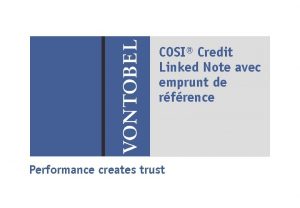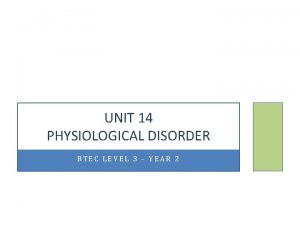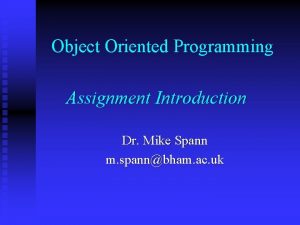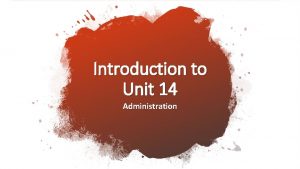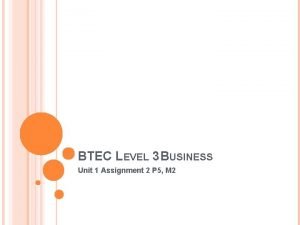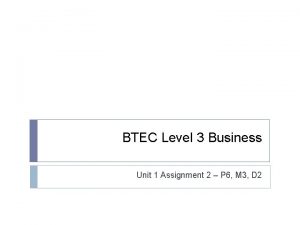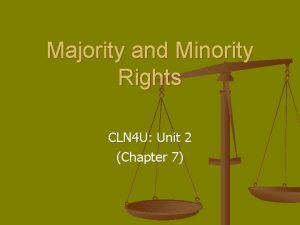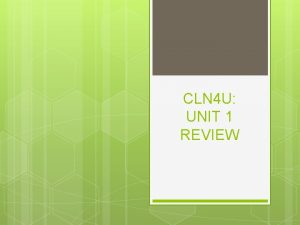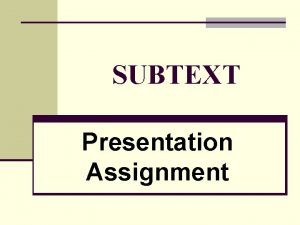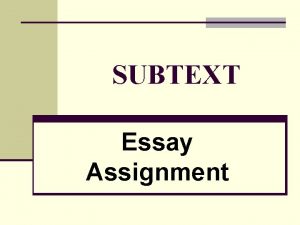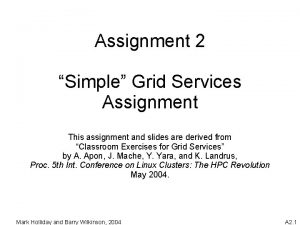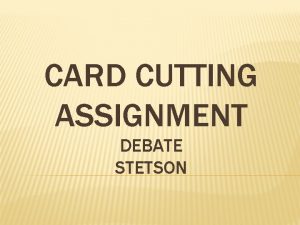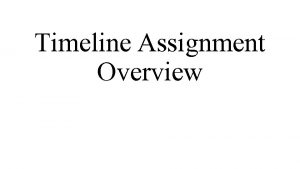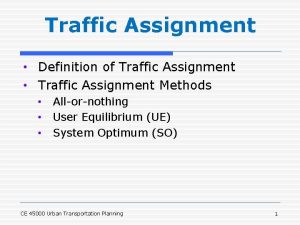CLN 4 U Unit 2 Assignment How to









- Slides: 9

CLN 4 U Unit 2 Assignment How to Prepare a Brief

Brief Writing Creating Case Briefs • Legal briefs are short summaries, or abstracts, of a case writen in your own words. • Purpose is to expose and fully understand the purpose behind a particular court decision. • Your job will be to distinguish pertinent facts from less important information. • For this particular assignment, a simplified version of a brief will be drafted on a particular Supreme Court case.

Brief Format Your brief will contain six basic components: 1. Citation 1. Facts of the Case 1. Legal Issue(s) 1. Decision 1. Ratio Decidendi / Dissent 1. Analysis

Citation Identifies the names of parties, which the court heard the case, and the year. Date Published Style of cause: Civil First name is plaintiff. Martin v. Perrie, [1986] 1 S. C. R. 41 (S. C. C. ) Second name is the defendant. Volume 1 of the Supreme Court Records, page 41. Supreme Court of Canada.

Facts This portion outlines what is significant in the case, and briefly states the facts. For this portion, your brief should contain the following: • A clear understanding of the events which gave rise to the litigation. • The cases reviewed in class are edited down from their original length. • Most cases deal with a great many issues and include many significant facts. • Your job is to research and capture the most important issues.

Legal Issues What question(s) must the court address in order to arrive at its decision? • Frame the issue in the form of a single question. • The question should must simply answerable with a yes or no. • Questions can be both narrow and broad in scope. Narrow in scope would apply to the specific case, but can be broadly addressed to other situations of a similar nature. Decision • Simply state the decision reached by the majority of the court.

Decision What question(s) must the court address in order to arrive at its decision? This portion is brief, but important. This portion should follow the format below: • Frame the issue in the form of a single question. • The question should must simply answerable with a yes or no. • Questions can be both narrow and broad in scope. Narrow in scope would apply to the specific case, but can be broadly addressed to other situations of a similar nature.

Ratio Decidendi Latin for “the rationale for the decision”. • For this section, identify the rule of law used to support or rationalize the judge's argument. • This section generally begins by naming the judge who read the decision. Dissent • Identify the arguments of the judge(s) who did not agree with the majority opinion, if applicable. • Note that in some cases, there is no dissenting voice.

Analysis • In this portion, you will evaluate the significance of the case, its relationship to other cases, its place in history, and what it shows about the Court, its members, its decision-making processes, or the impact it has on litigants, government, or society. • It is here that the implicit assumptions and values of the Judges or Justices should be probed, the “rightness” of the decision debated, and the logic of the reasoning considered. • This is the student’s commentary on the case. It is NOT simply a summary of what has already been stated elsewhere in the brief
 Credit linked note
Credit linked note Unit 10, unit 10 review tests, unit 10 general test
Unit 10, unit 10 review tests, unit 10 general test International business assignment 2
International business assignment 2 Unit 22 assignment 2
Unit 22 assignment 2 Unit 14 task 2
Unit 14 task 2 Unit 4 programming assignment 1
Unit 4 programming assignment 1 Unit 14 physiological disorders assignment 1
Unit 14 physiological disorders assignment 1 Btec health and social care unit 5 coursework
Btec health and social care unit 5 coursework Unit 1 assignment 2 business level 3
Unit 1 assignment 2 business level 3 Btec business level 3 unit 1 assignment 2
Btec business level 3 unit 1 assignment 2
